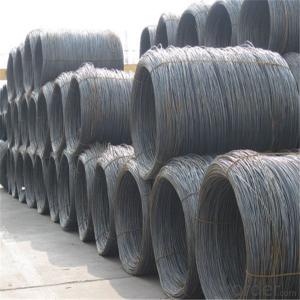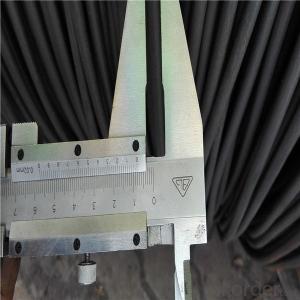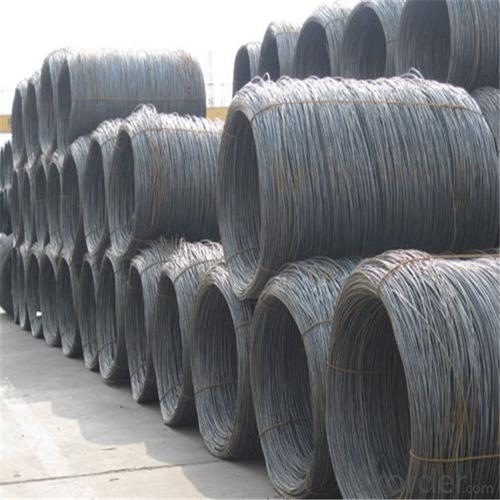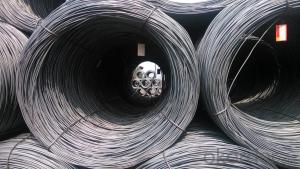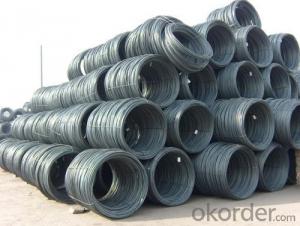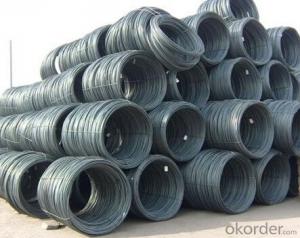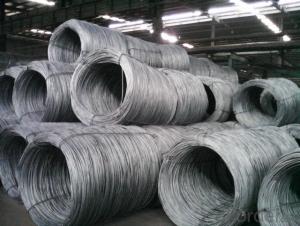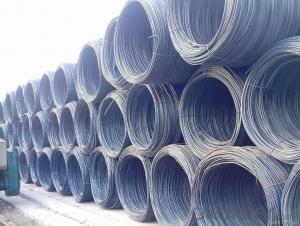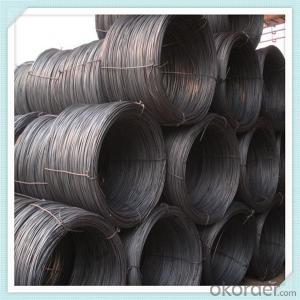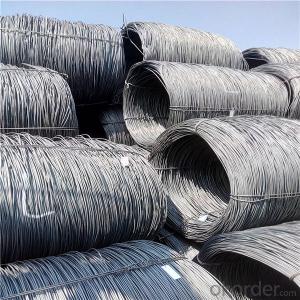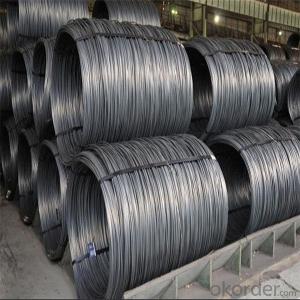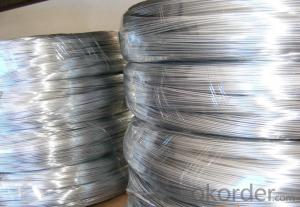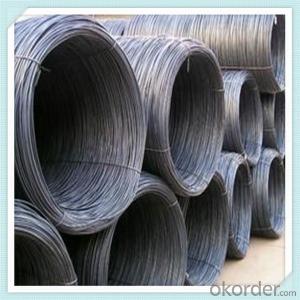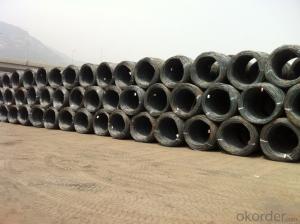Carbon steel wire rod from China mill hot sale
- Loading Port:
- Shanghai
- Payment Terms:
- TT OR LC
- Min Order Qty:
- 100 m.t.
- Supply Capability:
- 15367 m.t./month
OKorder Service Pledge
OKorder Financial Service
You Might Also Like
Specification
Wire rod is a rolled alloy or nonalloy steel product, produced from a semi (e.g. bloom) and having a round,
rectangular or other cross-section. Particularly fine cross-sections may be achieved by subsequent cold
forming (drawing). Wire rod is wound into coils and transported in this form. .
Mainly used in building and construction as binding wire, tie wire and baling wire; also can be make for wire mesh.
Our Advantage: High quality steel products from 1 class mills in
Reasonable price
Professionalism of the products
On-time delivery
Complete documents and certificates
Sincere service to meet our clients' requirements
Product Description :
Standard | AISI, ASTM, BS, DIN, GB, JIS |
Material/steel grade | Q195-Q235,SAE1006B,SAE1006CR, SAE1008B, SAE1008CR, SAE1010B, SAE1018B, or according to customers requirements |
Wire Gauge | 5.5-12mm |
Coil weight | 1.8-2.1mts |
MOQ | 25MT |
Delivery Time | 15-30 days after receipt of L/C or deposit by T/T |
Packing | In coil and load in container, if large quantity, by bulk vessel; Can be packed as customers' special requirements |
Payment terms | 1).100% irrevocable L/C at sight. 2).30% T/T prepaid and the balance against the copy of B/L. 3).30% T/T prepaid and the balance against L/C |
Application | widely used in machinery parts, manufacturing industry, electronics industry, metal tools and others |
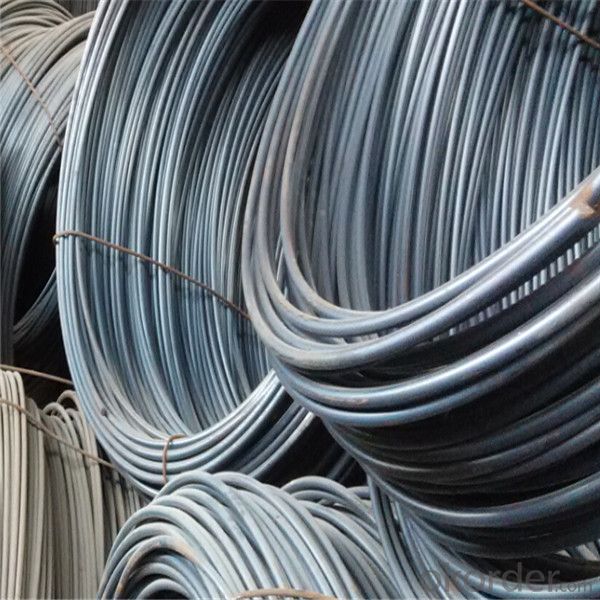
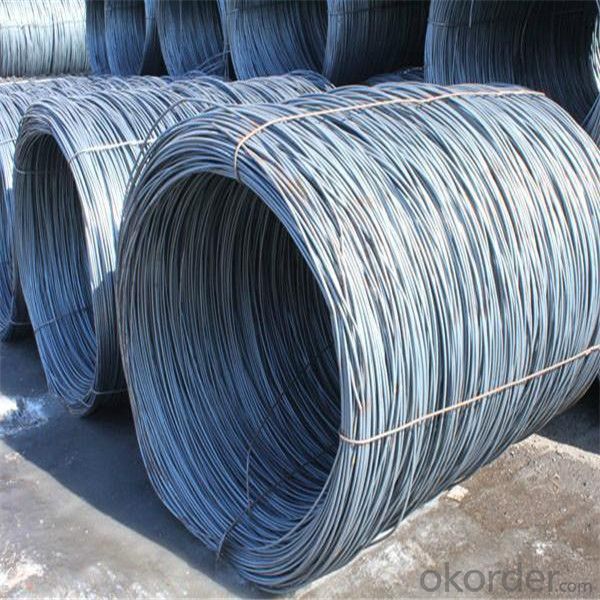
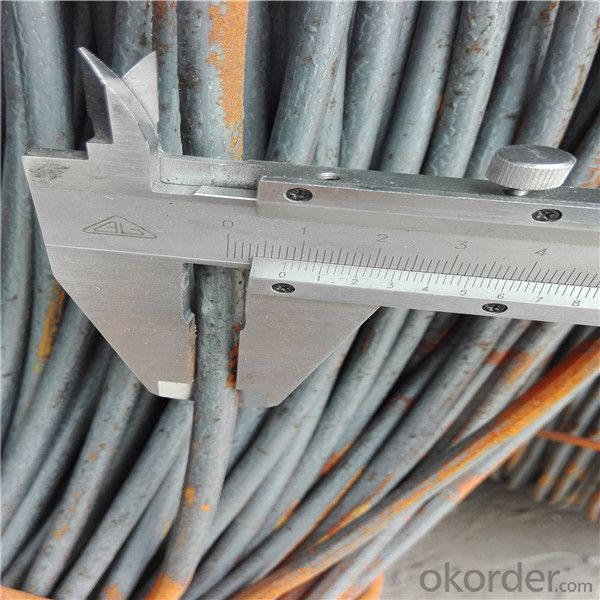
Application :
It generally used in braiding the hose for bathing product and machinery. With it
good flexibility, resistant to high temperature and resistant to corrosion, it
used widely in many industries.
Packing :
Hot-rolled wire rod is held in a unit with at least four steel straps in the
transverse direction and transported and stored without further packaging.
Before
the steel strapping is applied, the wire rod must be sufficiently compressed.
The strapping is fixed in the transverse direction with a single circumferential
strap so that the strapping does not slip and cause the coil to come apart.
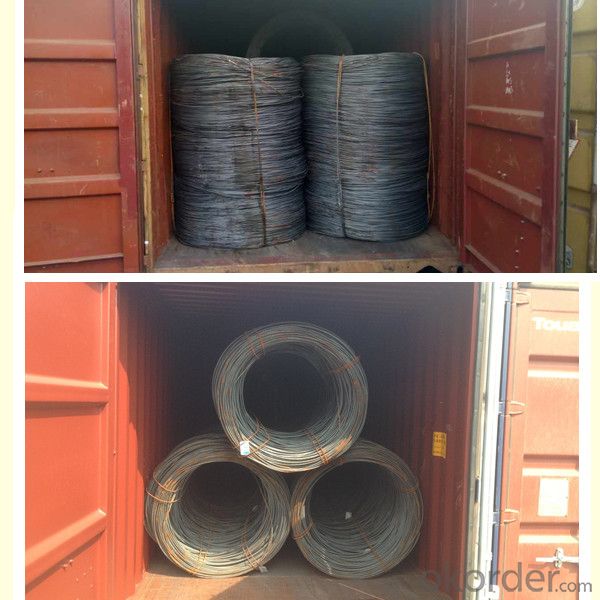
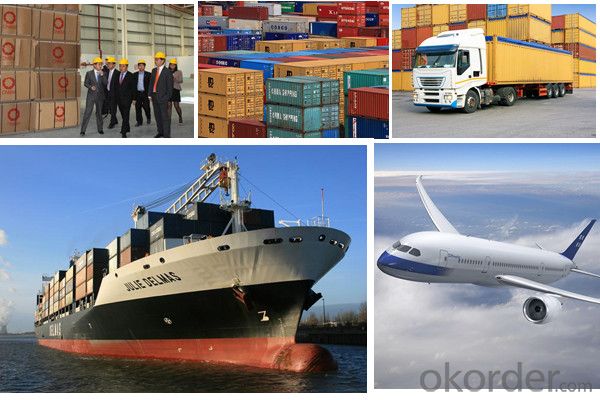
Our service:
(1) We cooperate with famous factories with advanced equipment and well trained workers.
(2) We can provide factory price with trading company service.
(3) We continuously work on the improvement of our processes, guaranteeing
consistently high standards of quality to keep none compensation.
(4) We guarantee 24 hours response and 48 hours solution providing service.
(5) We accept small order quantity before formal cooperation.
(6) We deliver the agreed quality at the agreed time, reacting to changes in
customer wishes in a flexible way.
(7) Due to our volume and selling power, we have excellent freight rates with
shipping lines.
(8) We strive to always be fair and honest in our dealings with customers.
(9) We strive to work together with customers to achieve much more than we can
achieve alone.
(10) Through our passion and commitment we aim to be a market leader in all our
key markets. To maintain our position as market leader we must continue to add
value in all that we do.
FAQ:
1.Q: What's your MOQ(minimum order quantity)?
A: One full container, mixed acceptable .
2. Q: What's your packing methods?
A: Packed in bundle or bulk ..
3. Q: How can I buy CNBM products in my country?
A:Please send us an inquiry or email ,we will reply to you if there is distributor in your country
4. Q: Can we visit your factory?
A: Warmly welcome. Once we have your schedule, we will arrange the
professional sales team to follow up your case.
5. Q: How long does it take to get the product if i place an order?
A:With the process of your requirements,we will pack and deliver in 3
-7 days. If it is by sea shipment,it will take 15-45 days depending on different locations
- Q: What are the different types of steel wire rod coatings used for improved ductility?
- Some of the different types of steel wire rod coatings used for improved ductility include phosphate coatings, zinc coatings, and polymer coatings. These coatings enhance the flexibility and malleability of the steel wire rod, making it more pliable and less prone to cracking or breaking.
- Q: How is steel wire rod used in the manufacturing of wire forms for jewelry?
- Steel wire rod is a primary raw material used in the manufacturing of wire forms for jewelry. It serves as the base material from which various wire forms such as chains, clasps, and pendants are created. The steel wire rod is typically processed through a series of manufacturing techniques, including drawing and annealing, which help to shape and strengthen the wire. Once the wire forms are created, they can be further embellished with beads, gemstones, or other decorative elements to create intricate and unique jewelry pieces.
- Q: How is steel wire rod coated for improved performance?
- Steel wire rod is coated for improved performance through a process called galvanization. This involves applying a protective zinc coating to the surface of the wire rod, which helps to prevent corrosion and increase its durability. The galvanization process can be done through hot-dip galvanizing or electroplating, both of which result in a strong and long-lasting coating that enhances the performance of the steel wire rod.
- Q: What are the common sizes and dimensions of steel wire rod?
- Steel wire rod is available in various sizes and dimensions to cater to different industrial applications. The common sizes and dimensions of steel wire rod typically vary based on the specific requirements and standards set by the industry. However, there are some commonly used sizes and dimensions that are widely available in the market. One of the most common sizes of steel wire rod is 5.5mm, which is widely used in the construction industry for reinforcement purposes. Another frequently used size is 6mm, which is also popular in construction and manufacturing applications. Additionally, steel wire rod is available in sizes such as 8mm, 10mm, and 12mm, which are commonly used in construction, automotive, and general manufacturing industries. In terms of dimensions, steel wire rod is usually produced in coils, with typical coil weights ranging from 1 to 3 metric tons. The diameter of the coils can vary, but they are typically around 1.2 to 1.5 meters. The coil inner diameter is usually in the range of 800 to 1,000 millimeters. It is important to note that the sizes and dimensions of steel wire rod can vary based on the specific requirements of the industry or project. It is always advisable to consult the relevant standards and specifications to ensure the correct selection of steel wire rod for a particular application.
- Q: How is steel wire rod used in the manufacturing of wire for medical devices?
- Steel wire rod is used as a raw material in the manufacturing of wire for medical devices. It undergoes various processes such as drawing, annealing, and coating to transform it into a high-quality wire. This wire is then utilized in the production of medical devices like catheters, surgical sutures, and orthopedic implants, providing them with strength, durability, and flexibility necessary for their intended use in healthcare settings.
- Q: What are the different types of steel wire rod surface defects and their impact?
- There are several types of steel wire rod surface defects, which include scales, scratches, pits, cracks, and rust. These defects can have various impacts on the quality and performance of the steel wire rod. Scales can reduce the strength and ductility of the rod, while scratches can lead to stress concentration and potential failure under load. Pits can act as stress risers and initiate cracks, compromising the integrity of the wire rod. Cracks can result in catastrophic failure and reduce the overall strength of the rod. Rust, on the other hand, can corrode the surface of the wire rod, reducing its lifespan and structural integrity. Therefore, it is crucial to identify and address these defects to ensure the reliability and quality of steel wire rods.
- Q: How is the machinability of steel wire rod determined?
- The machinability of steel wire rod is determined by various factors such as its chemical composition, microstructure, hardness, and surface finish. These characteristics affect the ease with which the wire rod can be cut, drilled, or machined. Additionally, factors like the cutting tool material and geometry, cutting speed, and feed rate also play a role in determining the machinability of steel wire rod. By considering these factors, manufacturers can evaluate and optimize the machinability of steel wire rod for specific applications.
- Q: How is steel wire rod used in the manufacturing of wire netting?
- Steel wire rod is used in the manufacturing of wire netting as the primary material. It is drawn through a series of dies to reduce its diameter and increase its length, resulting in a thin and elongated wire. This wire is then woven or welded together to form the mesh structure of the wire netting. The high tensile strength and durability of steel wire rod make it an ideal choice for constructing wire netting, which is commonly used for fencing, screening, and reinforcement purposes in various industries.
- Q: What are the main factors affecting the dimensional stability of steel wire rod?
- The main factors affecting the dimensional stability of steel wire rod are the composition and quality of the steel used, the manufacturing process and conditions, and the subsequent heat treatment and cooling processes. Other factors include the presence of impurities, the presence of residual stresses, and the environment in which the wire rod is used.
- Q: What are the different types of steel wire rod coatings used for increased adhesion?
- To enhance adhesion, various types of coatings are commonly applied to steel wire rods. These coatings serve to improve the wire rod's ability to bond with other materials. Among the commonly used coatings is zinc coating, also referred to as galvanizing. This process involves immersing the wire rod in molten zinc, creating a protective layer on the steel surface. Zinc coating not only enhances adhesion but also provides corrosion resistance, making it suitable for outdoor use. Another popular coating is copper coating, achieved through electroplating the wire rod with a layer of copper. This coating enhances adhesion and improves conductivity, making it ideal for electrical applications that require a strong and reliable bond. For increased adhesion, phosphate coating is another option. This method involves treating the wire rod with a solution containing phosphoric acid and other chemicals, resulting in a thin layer of phosphate crystals on the surface. The roughened surface created by the phosphate coating improves adhesion by promoting better bonding. In certain applications, polymer coating is utilized to enhance adhesion. This process involves applying a layer of polymer material, such as polyethylene or polyvinyl chloride (PVC), to the wire rod. Polymer coatings not only provide a strong bond with other materials but may also offer additional benefits such as insulation or protection against chemicals. In conclusion, zinc coating, copper coating, phosphate coating, and polymer coating are different types of steel wire rod coatings used to enhance adhesion. Each coating possesses unique properties and is suitable for specific applications where improved adhesion is required.
Send your message to us
Carbon steel wire rod from China mill hot sale
- Loading Port:
- Shanghai
- Payment Terms:
- TT OR LC
- Min Order Qty:
- 100 m.t.
- Supply Capability:
- 15367 m.t./month
OKorder Service Pledge
OKorder Financial Service
Similar products
Hot products
Hot Searches
Related keywords
